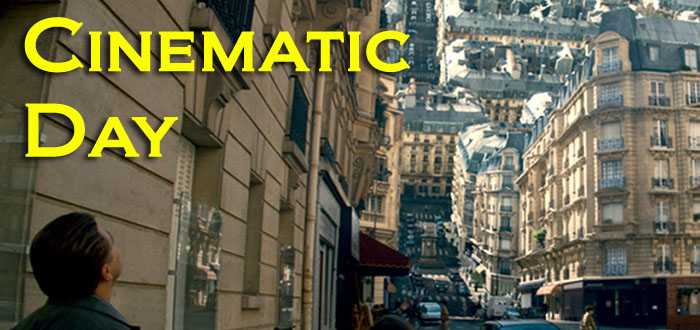This essay briefly analyses the role of visual style in communicating the ideas and themes of the Douglas Sirk film All That Heaven Allows (1955). My focus will be on mise-en-scene, and its elements of composition, lighting, set design, props, costumes and actors.
The director has acknowledged the strong the influence of Thoreau’s Walden on shaping his personal beliefs (Sirk & Halliday 1971). It is expressed in the story's main theme of freedom offered by a peaceful and simple life amongst the outdoors. What is to be left behind? In the context of 1950s post-war America, the social pressures and trappings of the modern world. Sirk critiques modern society and the perils of severing our link to nature in the pursuit of material success.
The story revolves around two characters, and features a brief running time. It makes the performances essential to conveying Sirk’s ideas. Overall, the acting style features characters externalising their feelings with each moment and line of dialogue. We as an audience become intimate with their emotional lives, but our awareness of this technique creates enough distancing to be entertained. Jane Wyman’s performance could be seen as demonstrating the conventions of melodrama and the genre’s camp aesthetic (Klinger 1994). However, she is earnest in expressing emotional anguish, and articulates the film’s key theme with Cary’s journey to freedom. Sirk presents the conflict of a woman following her heart, but also dramatises issues of gender inequality and the repression of women at the time.
Rock Hudson, as Ron, is a rugged yet sensitive man of nature and the personification of a masculine ideal. Taller and more physically engaged with his environment than other male characters, he's often depicted working with his hands on various projects. These include sanding a wooden stairway and pruning a tree. He is directed to look off camera and posed in heroic profile shots when delivering his wisdom. When he meets Cary’s family, although wearing a suit for the only time in the film, he slumps back into his seat, displaying a relaxed fluidity to his movements. It conveys to the audience a man without a care. Ned in comparison is stiff, histrionic and mannered. It could be argued this is a conscious attempt by Sirk to critique the conservative attitudes of American society in the 1950s.
Set design translates the film’s themes to the screen. The interior of Cary’s home, as an upmarket suburban dwelling, features sharp angles and is cluttered with furniture, decorations and appliances. It generates a claustrophobic effect of imprisonment. Ron’s home is an open plan design, with plenty of natural light and minimal clutter. It communicates a sense of comfort and relaxation. The high glass ceiling of its greenhouse opens up space rather than shutting people inside. The lighting in Ron’s home is softer and paints warmer colours, in sharp contrast to the harsh top light and amber hues that permeate Cary’s home.
Social norms are visualised by the sets that imprison Cary; in many scenes she is separated from other characters by screens and doors. In others she peers through windows as though trapped behind bars. Such overt symbolism is employed by Sirk throughout the film, and is often communicated through props. Cary finds a broken teapot in the old mill; it is repaired by Ron, only to break and represent the shattered hopes of a future together. Trees are prominent symbols of nature in the film. Ron handles and tends to them constantly. At one point he emerges magically from a truck loaded with Christmas trees to approach Cary. His station wagon is an earthy brown and features wooden panels, in contrast to the smooth metallic lines of Carrie’s blue sedan.
The film’s most effective use of a prop is the black television set given to Cary by her children. Subverting its role in signalling a new era of entertainment, the TV appears as a menacing symbol of progress and dehumanisation. More importantly, it symbolises the death of Cary’s hopes and her bleak and isolated future. Sirk was remarkably ahead of his time in this sly comment about the threat of technology.
Sirk favours wide shots that allow costumes to play a role in expressing his ideas. Male characters, such as Ned, mostly dress in sharp business suits. Ron however wears comfortable and practical clothing that matches his job as an outdoor gardener. It also differentiates him from the townspeople. The women are elegantly dressed, and wear make-up even when going about daily chores. Cary’s striking red dress, worn for Harvey and then a date at the country club, symbolises her frustrated sexuality at the prospect of marrying a much older man. It brings humiliation when a drunk guest launches an unwelcome advance. The evening wear in the country club sequences act as a metaphor for the willingness of each character to go along with rigid social conventions.
The old mill, first seen in disrepair, symbolises the potential for rebuilding and hope for the couple’s shared future. It could also be seen as a metaphor for Cary, whose life is in need of a fresh start. Sirk frames and composes this setting to maximise visual impact. The old mill’s rustic charm is balanced by carefully positioned trees and water flowing in the background. Wide shots are rendered using the technique of matte painting for a fairy tale look. This aesthetic enables Sirk to construct a stylised portrait of nature, one arguably just as artificial as the nearby town. Snow sequences, particularly the climactic one where Ron suffers an accident, are obviously staged in a studio, with artificial snow layered in by art directors. The inclusion of a deer functions as a symbol of innocence, and its presence has the strange effect of pointing out the artifice of film making.
References:
Klinger, B. 1994, Melodrama and meaning, Indiana University Press, Bloomington.
Sirk, D. & Halliday, J. 1971, Sirk on Sirk: interviews with John Halliday, Martin Secker & Warburg, London.


No comments:
Post a Comment